How did the dispute begin? A look at the history of the border row, which is often raked up close to elections as parties attempt to score brownie points.
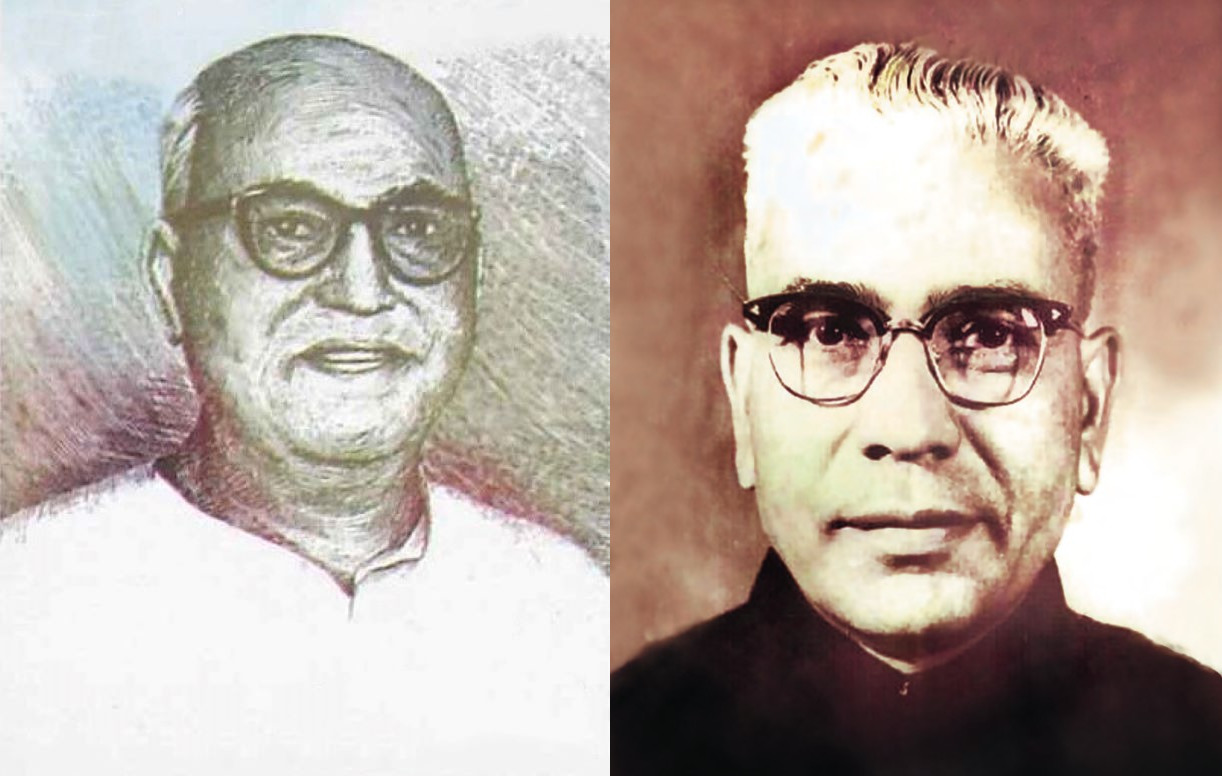
In 1966, with the consent of S Nijalingappa and Vasantrao Naik, the then chief ministers of Karnataka and Maharashtra respectively, the then PM Indira Gandhi constituted a second commission under former chief justice Mehr Chand Mahajan to resolve the interstate border dispute (Wikimedia Commons/DGIPR Maharashtra website)
The Karnataka-Maharashtra border is simmering. On Monday, 5 December, the government of Eknath Shinde seemed to have backtracked somewhat, and the latest reports suggest the visit to Belagavi district planned by Maharashtra’s border in-charge ministers Chandrakant Patil and Shambhuraje Desai may be cancelled. The Karnataka government has, meanwhile, remained combative — the Belagavi district administration has clamped prohibitory orders to prevent the ministers from entering Belagavi city. And Karnataka Chief Minister Basavaraj Bommai has threatened “suitable legal action” if the ministers tried to enter Belagavi.
The Winter Session of the Karnataka Legislative Assembly is all set to be held in the iconic Suvarna Soudha in Belagavi from 19 December. The Suvarna Soudha is a structure that asserts Belagavi — a district that neighbouring Maharashtra has staked claim to — as an integral part of Karnataka.
The session comes at a time the Supreme Court is set to hear arguments about the maintainability of a petition filed by the Maharashtra government. Maharashtra has gone to the apex court challenging some provisions of the State Reorganisation Act, 1956, and insisted that 865 villages from five districts of Karnataka should be merged with that state.
The decades-old border dispute between Maharashtra and Karnataka flares up every time an election is around, a court date nears, or whenever the latter decides to hold its legislature session in Belagavi.
It was in 1956 that violence over the border broke out for the first time ever between Karnataka and Maharashtra, recalled Ashok Chandaragi, president of the Belagavi Kannada Organisations Action Committee, to South First. Ever since, clashes between Marathi and Kannada groups, protests, and even vandalism have often been witnessed on either side of the border.
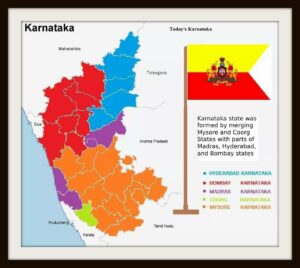
How Karnataka was formed in 1956 (Modified from Wikimedia Commons/Vinayakavm)
The inter-state border dispute between Karnataka and Maharashtra dates back to the early 1950s. Karwar, Belagavi, Vijayapura, and Kalaburagi of Karnataka, and Akkalkot, Jath, Solapur, and Pandharpur of Maharashtra are the disputed areas.
When Mysore State came into existence, four divisions — Belagavi (then Belgaum), Dharwad (then Dharwar), Uttara Kannada (then North Kanara), and Vijayapura (then Bijapur) — were part of the then Bombay state. A movement for the unification of Karnataka was launched in the early 1900s.
The then Prime Minister Jawaharlal Nehru constituted a commission headed by Chief Justice Fazal Ali in 1953. Also known as the States Reorganization Commission, it was mandated to submit a detailed report to reorganise states on a linguistic basis. The language spoken in the region by the majority became the primary yardstick for the assessment.
Two years later, in 1955, the commission submitted its report. “As per the Fazal Ali Commission report, Belagavi, Uttara Kannada, Dharwad, and Vijayapura were merged with Karnataka. This report was rejected by the then Bombay State government, which demanded the inclusion of Belagavi in their state. Huge violence broke out across Bombay state, including in Mumbai,” said Chandaragi about the initial incidents of violence over the inter-state dispute.
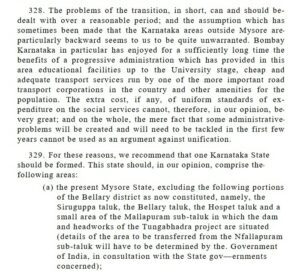
The Fazal Commission in 1955 recommend the transfer of four Kannada-speaking districts in the then Bombay State to Karnataka
After the violence went on unabated in the Karnataka-Maharashtra border areas, the Union government tried to address the dispute by setting up a zonal council. It had two representatives from both states. The council was entrusted with the readjustment of areas.
Chandaragi further said: “Both the states did not come to terms and submitted separate reports. There was no unanimity in the zonal council report.” Another effort, too, did not yield results.
Political stalwarts in Maharashtra, including YB Chavan, former chief minister, and SB Chavan, who was later to become chief minister, devised a plan to make the Central government constitute a new commission to resolve the dispute.
“Maharashtra’s politicians made freedom fighter Pandurang Mahadev Bapat, popularly known as Senapati Bapat, go on an indefinite hunger strike demanding that the Indira Gandhi-led Union government constitute a new commission. The political leaders of Maharashtra put pressure on Indira Gandhi by saying that Bapat would die if the commission was not formed at the earliest,” Chandaragi claimed.
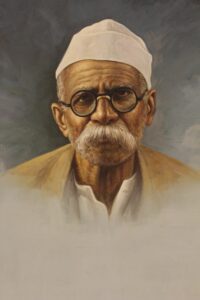
Painting of Pandurang Mahadev Bapat, a freedom fighter (Wikimedia Commons/Pratishkhedekar)
Yielding to the pressure and with the consent of S Nijalingappa and Vasantrao Naik, the then chief ministers of Karnataka and Maharashtra, respectively, the prime minister constituted another commission under former chief justice Mehr Chand Mahajan on 25 August, 1966, to resolve the border dispute.
The setting up of the commission triggered violent protests in Karnataka.
The commission members toured the border areas of Karnataka and Maharashtra. The panel submitted its report to the Union government on 25 August 1967.
The Mahajan report recommended that 264 villages and cities, including Nippani, Nandagad, and Khanapur of Karnataka, be included in Maharashtra. It also suggested that 274 villages and cities, including Jath, South Solapur, and Akkalkot of Maharashtra, should be added to Karnataka.
Karnataka’s stance has always been that Belagavi and all its villages are an integral part of the state.
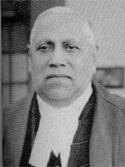
Justice Mehr Chand Mahajan (Supreme Court website)
“[The then chief minister of Maharashtra] Vasantrao Naik initially accepted the Mahajan Commission report. A month later, he retracted and opposed the commission report, which the Indira Gandhi-led government tabled in Parliament in 1970,” recollected Chandaragi.
Though tabled, the report was not discussed in Parliament. With this, the animosity of the Marathi-speaking regions in Karnataka and Kannada-speaking regions in Maharashtra towards their respective governments increased.
With the embers of the Karnataka-Maharashtra border dispute smouldering, political parties seized the opportunity to exploit sentiments. Riding piggyback on regional sentiments, the Maharashtra Ekikaran Samiti (MES) dominated the local politics of Belagavi, mainly in the Marathi-speaking areas.
“For the first time, the MES won six Assembly seats from various constituencies of Belagavi and one from Balki of Bidar in the 1972 Assembly polls,” Chandaragi pointed out.
In the 1977 Assembly polls, the MES lost hold of two Assembly seats — Nippani and Balki — because of political engineering by the then Karnataka chief minister Devaraj Urs.
“The MES’s numbers came down to five. In the subsequent elections, the party lost its hold across Belagavi. It lost power in all the Assembly seats in Belagavi in 1999. However, the MES managed to win in Belagavi South and Khanapur Assembly seats because of the division of the Kannada votes in 2013,” Chandaragi said.
“In the 2018 Assembly polls, the MES lost all seats it had contested, and many of its followers joined the BJP, Congress and other regional parties,” he added.
Today, the BJP has emerged stronger in the region despite the presence of several tall Congress leaders, thanks to the transfer of MES leadership, cadre, and votes.
In April 2004, the Maharashtra government filed a special leave petition in the Supreme Court, claiming 865 villages of Uttara Kannada, Belagavi, Kalaburagi, and Bidar. The appeal was based on the report submitted by the YV Chandrachud Commission constituted by Maharashtra.
Interestingly, the petition is likely to come up for hearing before his son and incumbent Chief Justice DY Chandrachud.
Since then, political parties have used border disputes as a tool to gain mileage in polls in both states. Meanwhile, Maharashtra has been unsuccessfully appealing to the apex court for the past 18 years.
“The Karnataka government is claiming that it (the appeal) is not maintainable before the court. It has made its stand clear. Meanwhile, Maharashtra is appealing under Article 131 of the Constitution, which says anything can be challenged before the court, to take it up for hearing,” Chandaragi said.
People in some Maharashtra villages have recently expressed a desire to merge their areas with Karnataka.
Even as Maharashtra continued to stake claim to Karnataka villages, it faced a severe setback when the people of around 40 villages of Jath taluka of Sangli district passed a resolution around a week ago seeking a merger with Karnataka. The villagers are disappointed with the Maharashtra government for not carrying out development activities in border areas.
“The border villages do not have proper access to health, education, transportation and drinking water. The Maharashtra government is least bothered to improve the basic amenities in the border areas. We still ride bullock carts to towns and cities. We struggle to get drinking water in summer,” Mahadevappa Ankalgi, a resident of Jath, told South First.
He added that he would soon approach Karnataka Chief Minister Basavaraj Bommai with the merger demand.
Meanwhile, the Maratha Mahasangh recently painted pro-Maharashtra slogans on buses from Karnataka. In retaliation, members of various Kannada organisations in Belagavi and Kalaburagi painted “Jai Karnataka” on buses and lorries from Maharashtra. In some areas, Kannada activists poured black ink on the vehicles.

Apr 25, 2024

Apr 24, 2024

Apr 24, 2024

Apr 24, 2024

Apr 24, 2024

Apr 22, 2024